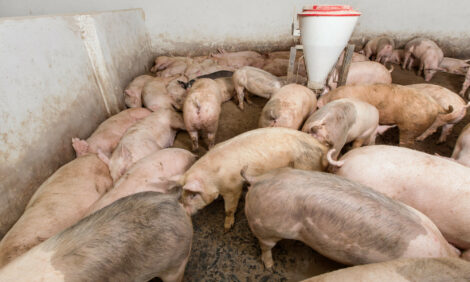



French Retailer with Hands-on Approach to Traceability
Just when traceability scares have retailers across the world running for cover, one French retailer can justifiably feel that more than 40 years of working alongside food producers has been vindicated, writes Peter Crosskey.Intermarché is more than a retail operation: as part of the Mousquetaires group, it is also part of the 11th largest food industry group in France.
One of the fundamental differences that led Mousquetaire founder, Jean-Pierre Le Roch, to break away from the retail movement led by fellow Breton, Edouard Leclerc, in 1969 was a vertically-integrated vision of the supply chain.
Today, the Mousquetaires group operates France's largest fishing fleet, runs 60 food production sites, has 5,000 local producer partnerships as well as 1,200 national and regional agreements.
Mousquetaires' food industry director, Christophe Bonno, told ThePoultrySite that Le Roch's intention was to be in a position to offer consumers genuinely original products that could not be sourced by rival retailers.
In this respect, France's second largest group of independents has a lot in common with Switzerland's Migros cooperative, with its huge manufacturing capacity.
The strategy for the next few years is ambitious: the Mousquetaires' manufacturing target for 2015 is to generate sales of €4 billion and earn 30 per cent of its business outside the parent group.
In the process, it wants to become one of France's top five food manufacturers.
At present, the Mousqetaires' slaughtering and butchery subsidiary, Société Vitréenne d'Abattage Jean Rozé supplies more than two-thirds of the red meat sold at Intermarché and Netto stores.
With a workforce of 3,600, SVA Jean Rozé produces a quarter of a million tonnes of meat a year at five abattoirs and cutting plants.
This translates into 119,000 tonnes of beef, 100,000 tonnes of pig meat, 18,000 tonnes of veal, 7,500 tonnes of cull sow and 5,000 tonnes of lamb.
Beef Sector
For beef producers, Mousquetaire contracts are bankable: after 10 years, the 2012 regional beef contracts recruited over 900 livestock producers, 155 traders, 26 producer associations and 11 livestock groups.
The farmers involved earned nearly €750,000 in bonuses in 2012, worth around 22 cents per kg deadweight, a figure which SVA Jean Rozé reckons to be worth five or six per cent above prevailing market prices.
A seven-point hygiene good practice charter was worth three cents per kilo for the 7,200 producers who qualified in 2011. Since 2010, SVA has been contractualising large volumes of young beef with agreements based on input costs, reflecting changes in the cost of cereals and other finishing inputs.
In 2012, this scheme accounted for 10,000 head, trebling the volumes of slaughter animals.
Intermarché's slaughtering subsidiary, Société Vitréenne d'Abattage Jean Rozé (SVA Jean Rozé), has signed an agreement to buy the projected 1,400 bullocks a year that will be fattened at a proposed 1,000-animal finishing unit that is to be built on the Millevaches (literally 'thousand cows') plateau by the SAS Alliance Millevaches venture.
The signing took place at the Paris international farm show, SIA.
Situated between the Creuse and the Corrèze départements, the new unit will mean that exporting about 800 live cattle a year to Italy will become a thing of the past since there will be local finishing capacity.
The site at Saint Martial le Vieux is roughly halfway between Clermont Ferrand and Limoges, close enough to the départmental border to attract backing from both départements as well as the Limoges Conseil Général and the French state. Last year's planning enquiry gave the project a green light in October.
Pig Sector
As a buyer of just over one million pigs a year, SVA Jean Rozé works with 540 producers across Brittany, Normandy and the Loire for its finished pig requirements at its slaughterhouse in La Guerche de Bretagne.
As an early adopter of Viande Porcine Française, producers for the Mousquetaires can earn bonuses reckoned to be worth up to 2.5 cents per kilo for consistent carcasses and observing livestock management standards on the holding.
The animal husbandry bonuses apply to about two-thirds of the intake. There is also extra money to be earned by producers supplying a Label Rouge quality scheme that takes in about 1,000 pigs a week.
Dairy Sector
Intermarché has only ever sold French-produced liquid milk.
In 1990 the Mousquetaires acquired a dairy at Saint Père en Retz in Loire Atlantique. Here, milk from nearly 500 milk producers is processed to make products in the Pâturages branded range.
Since 2009, the French provenance of its milk has been flagged up on Pâturages products with a little blue-and-white badge.
Fish Sector
Reflecting the importance of fishing to the Breton economy, the Mousquetaires' involvement in the sector goes back decades and the group stocks 60 per cent of its fish requirements from its own fishing effort. Its fishing fleet, Scapêche, comprises eight deep-sea trawlers, five trawlers, a crab potter, two specialist sardine boats with bolinche seine nets and a longliner.
Ashore, the group operates Europe's largest vivier facility for shellfish, Les Viviers de la Méloine, as well as two fish processing sites, one in Lorient, the other in Boulogne-sur-Mer.
The way in which the Mousquetaires group combines food retailing and food processing with local procurement preferences in France is both distinctive and challenging. But one thing is certain: by managing its own production facilities and having a hands-on approach to upstream procurement, the Mousquetaires will weather the increasingly stormy waters that are catching out unwary retailers across Europe and further afield.
March 2013








